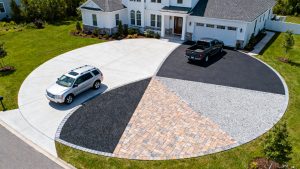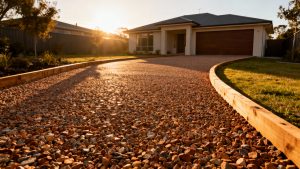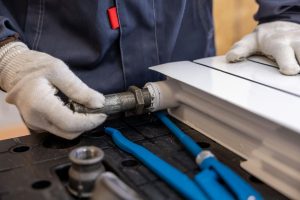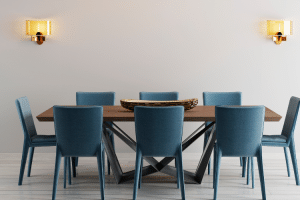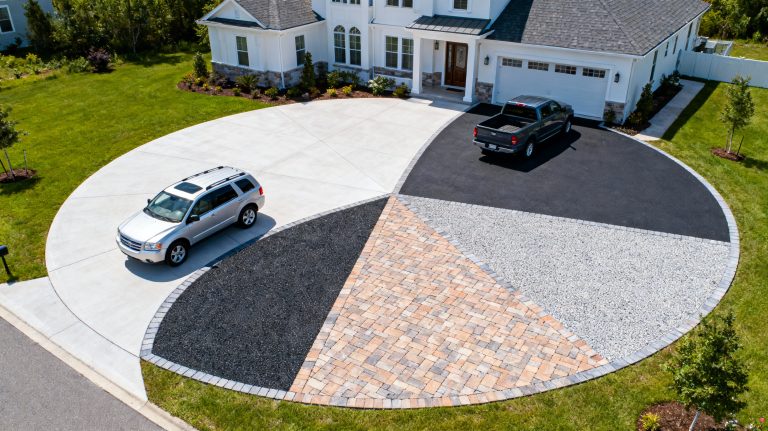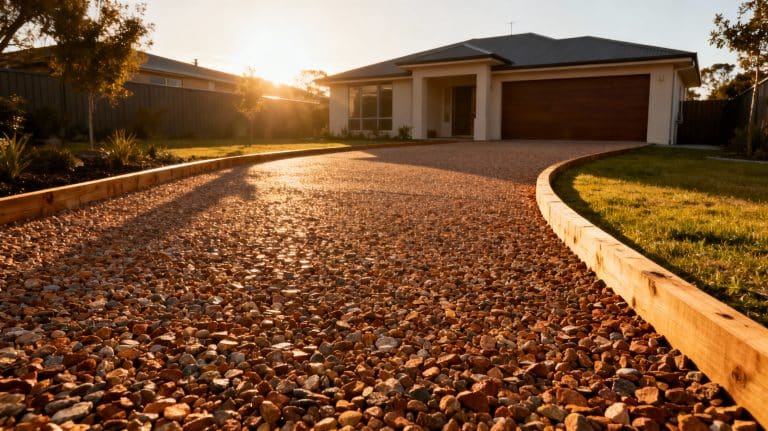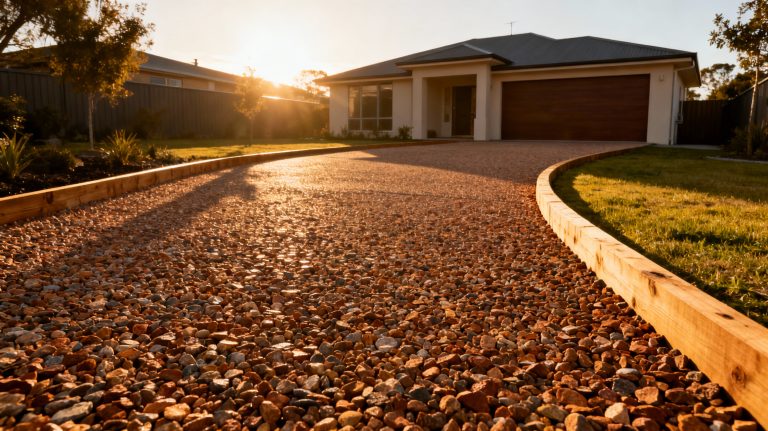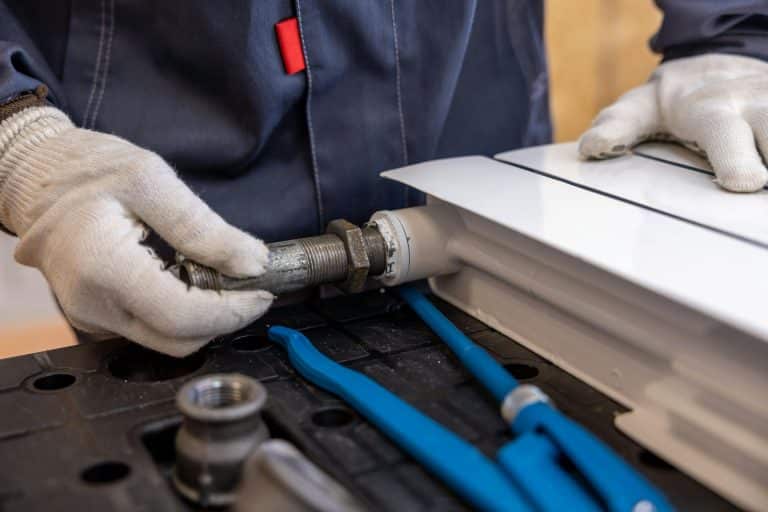If your driveway forces you into a stressful 17 point turn or backs you blind into traffic, a car turntable can be a clean, elegant fix not a last resort. You don’t have to decide tonight.
First step you can do right now: grab chalk or painter’s tape and mark a circle where a platform could go. If your car fits comfortably inside it, you’re in the game.
You know the feeling: tires scrubbing the curb, mirrors inches from the hedge, neck craned for a gap in traffic. Let’s make that go away.
First: do you actually need a turntable? Two quick checks
-
Fit check (10 minutes): Measure and chalk a circle. For sedans and small SUVs, try 14-16 feet in diameter; for larger SUVs and pickups, 18-20 feet. Park centered inside the circle and open the doors.
You’ll know in minutes if a turntable is feasible: if doors can open without hitting walls and the circle doesn’t spill into the street, you have enough room.
-
Drainage and slope check (5 minutes): Where the platform would sit, pour a bucket of water and watch for 5 minutes. If water flows away or disappears through a drain, good. If it pools, plan a surface mounted turntable or include drainage in your budget.
Good sign: you see water moving off the area right away. If it sits, a pit install will need a drain or sump.
Optional third check: power. Look for a nearby outdoor GFCI outlet or a path from your electrical panel. Most residential motorized units run on a dedicated 120V circuit. Bigger platforms or heavy loads may call for 240V. This simply informs the installer don’t overthink it now.
Early confusion to clear up: manual vs motorized both “spin the car,” but daily use favors motorized. Occasional use or frequent outages can justify a manual or hybrid system.
How a car turntable works (in plain English)
Think of a turntable as a low, stout carousel engineered for cars. The vehicle sits on a circular deck. Beneath it, a central bearing and perimeter rollers carry the load. A compact electric motor turns a drive wheel or gear ring at the deck’s edge, rotating the platform smoothly 360 degrees. You press a remote, key switch, or wall button. The deck starts gently, rotates, and stops where you want.
Rotation is typically 30-60 seconds for a full turn. Safety systems are built in: soft start/stop to avoid jerks, emergency stop, limit switches, and often sensors that halt movement if something obstructs the deck.
Manual and semi manual versions use precision bearings so a person can rotate the deck with surprisingly little force, sometimes with a small geared assist.
If you want the surface flush with your driveway, the unit sits in a shallow pit (about 10 inches deep). Surface mounted systems sit on top of existing concrete or pavers and add only a few inches of height.
Types and key choices
-
Motorized vs manual
- Motorized: best for daily use, anyone with mobility concerns, or tight timing. Most support 2-3 tons and use a remote or switch.
- Manual/semi manual: budget friendly, fewer electrical needs, still effective for occasional use or as a power outage backup.
-
Surface mounted vs pit (embedded)
- Surface mounted: simpler retrofit, no excavation, great where drainage is tricky. Slight step up (often 3-6 inches).
- Pit: flush finish, polished look, often preferred in new builds. Requires excavation, drainage, and careful waterproofing.
-
Diameter and capacity
- Typical diameters: 14-16 feet for sedans and compact SUVs, 18-20 for full size SUVs and trucks.
- Capacity: most residential platforms handle 2-3 tons. Check your vehicle’s curb weight and choose a comfortable margin.
-
Deck finish and style
- Galvanized steel checker plate for grip, or trays that accept pavers/stone to blend with your driveway.
- Anti skid coatings are common. Choose a finish that stays safe when wet.
-
Controls and safety
- Wireless remote, wall switch, or key control. Child lock options are common.
- Safety sensors, limit switches, and audible alerts reduce risk during rotation.
Costs: what to expect and what drives the price
Budget ranges swing mainly with size, finish, and site work; half-circle driveway price ranges are driven by the same factors. As a ballpark:
-
Equipment
- Manual/semi manual platforms start around $3,000-$5,000.
- Most motorized residential systems land around $8,000-$12,000.
- Larger diameters, higher capacities, or premium finishes can push equipment to $13,000-$20,000+.
-
Installation
- Straightforward surface mount installs: roughly $1,000-$5,000 depending on site access and foundation prep.
- Pit installs add excavation, drainage, and concrete work. Expect several thousand more, especially with challenging soils or utilities.
- Electrical work (dedicated circuit, conduit, controls) often runs a few hundred to ~$1,500.
-
Typical totals
- Surface mounted motorized: roughly $10,000-$18,000 installed.
- Pit mounted motorized: roughly $15,000-$30,000+ installed.
- Manual: roughly $4,000-$9,000 installed, depending on size and finish.
Ongoing costs are modest. Electrical use is minimal because the motor runs for less than a minute at a time. Maintenance is light: periodic inspections, lubrication, and clearing debris if you have a pit. Warranties commonly span 1-5 years. Read the fine print on load ratings and finishes.
Planning, permits, safety, and upkeep
Permits vary. Some jurisdictions treat turntables like mechanical equipment. Others may ask for simple structural notes or drainage details. If your city expects “forward egress” on busy streets, a turntable often checks that box when widening isn’t possible. HOAs may care about visible height and finishes.
Slope and drainage matter. A pit needs water management: a drain line, gravel sump, or small sump pump. In freeze climates, plan for proper frost depth and de icing that won’t attack finishes (galvanized steel holds up well). Surface mounted units need a sound, level base new slab or well cured existing concrete usually does the trick.
Day to day, using a turntable feels like a garage door opener: press the button, rotate, go. Noise is roughly in that range. Keep the deck clear, sweep out leaves, and have bearings and rollers inspected once in a while. In rain and snow, anti skid surfaces earn their keep.
You’ll see useful momentum quickly: after a brief site visit, most homeowners have a firm design and quote within about a week. And for retrofits, a typical installation day is exactly that one day once any concrete or pit prep is complete. You’ll know everything’s dialed in when the platform rotates smoothly, stops precisely, and your car points out to the street without drama.
Understanding the real problem
Most “impossible” driveways aren’t about the driveway at all they’re about turn radius, sightlines, and traffic gaps. Backing out multiplies all three problems at once.
A turntable decouples the maneuver from the space: you rotate in place, then join traffic forward. That’s why the chalk circle test matters more than driveway length once the circle fits, the geometry works.
Alternatives to consider before you commit
- Widen the driveway apron or curb cut (if allowed). Sometimes a foot or two changes everything.
- Add a compact “hammerhead”, mini turnaround pad, or half-circle driveway option rather than a full platform.
- Rehang or automate gates to swing/slide clear of turning space.
- Install convex mirrors or add cameras for blind exits. Helpful, but won’t satisfy forward egress rules.
- Choose a shorter wheelbase vehicle if you’re already car shopping.
- Re stripe parking orientation on the pad to reduce backing angles.
A note from the field
We often find that a 16 foot motorized platform solves 90% of tight lot headaches, with rotation times around 45 seconds and simple 120V power. Larger SUVs and trucks tend to be happier on 18-20 feet with a pit or careful leveling.
The big variable isn’t the machinery it’s drainage and access, which is why those first two checks save time and money.
Ready for next steps?
Whether you DIY the early planning or want backup, we can do a fast feasibility visit: verify diameter with a full size template ring, check slope and drainage, review power and code, and give you a clear, itemized plan.
We usually turn around quotes within a week and coordinate one day installs once prep is set. Call us when you’re ready either way, you’ll walk away knowing exactly what will work on your driveway and what it will cost.




